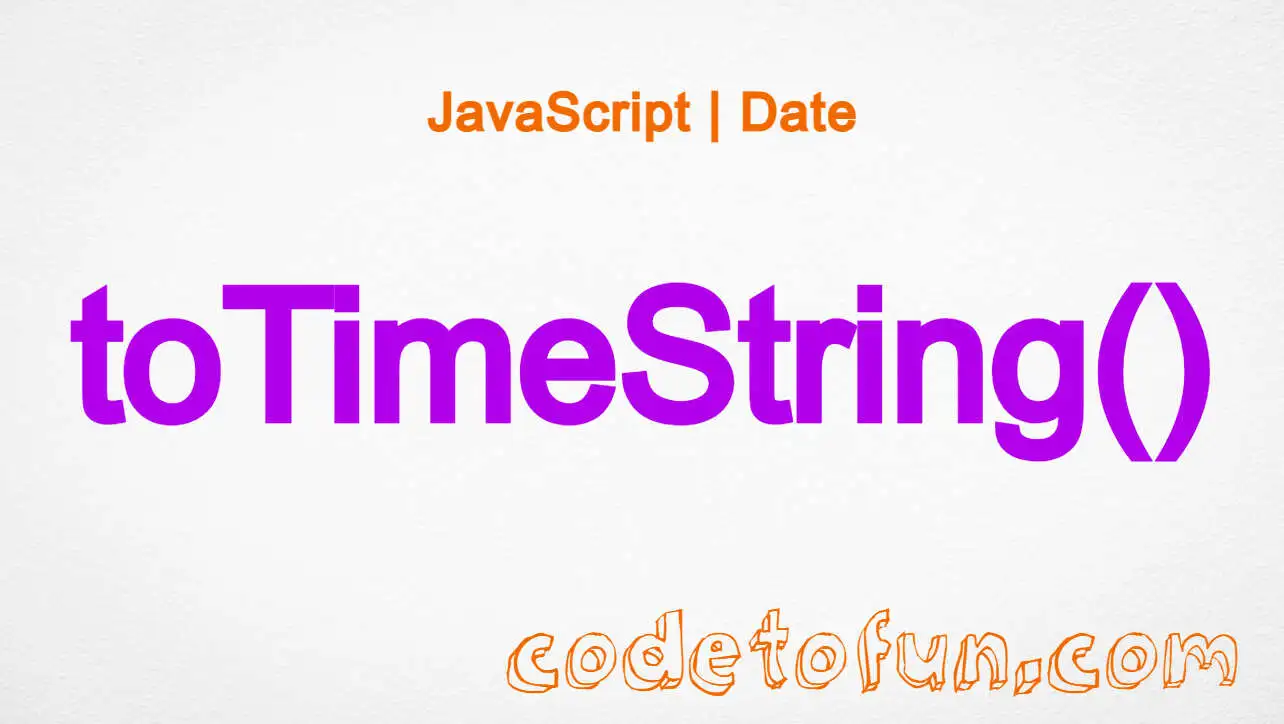
JS Date Methods
JavaScript Date setUTCSeconds() Method

Photo Credit to CodeToFun
🙋 Introduction
In JavaScript, the Date object is your go-to tool for working with dates and times. One of its useful methods is setUTCSeconds(), allowing you to set the seconds portion of a date object in Coordinated Universal Time (UTC).
In this guide, we'll explore the syntax, usage, best practices, and practical examples of the setUTCSeconds() method.
🧠 Understanding setUTCSeconds() Method
The setUTCSeconds() method is part of the Date object and is employed to set the seconds of a date in UTC time. It's particularly handy when you need to modify a specific aspect of a date without altering other components, such as the year or month.
💡 Syntax
The syntax for the setUTCSeconds() method is straightforward:
dateObj.setUTCSeconds(secondsValue, [millisecondsValue]);- dateObj: The Date object you want to modify.
- secondsValue: An integer representing the seconds (0 to 59).
- millisecondsValue (optional): An optional parameter representing the milliseconds (0 to 999). If provided, the milliseconds will also be set.
📝 Example
Let's explore a simple example to illustrate how to use the setUTCSeconds() method:
// Creating a new Date object
const currentDate = new Date();
// Setting the seconds to 30 in UTC time
currentDate.setUTCSeconds(30);
console.log(currentDate);In this example, we create a new Date object representing the current date and time, then use setUTCSeconds() to set the seconds to 30.
🏆 Best Practices
When working with the setUTCSeconds() method, consider the following best practices:
Use Current Date Object:
It's a good practice to start with a Date object representing the current date and time to avoid unexpected results.
example.jsCopiedconst currentDate = new Date(); currentDate.setUTCSeconds(30);Error Handling:
Ensure that the values provided for seconds and milliseconds are within the valid ranges to prevent unexpected behavior.
example.jsCopiedconst secondsValue = 45; const millisecondsValue = 500; if (secondsValue >= 0 && secondsValue <= 59 && millisecondsValue >= 0 && millisecondsValue <= 999) { currentDate.setUTCSeconds(secondsValue, millisecondsValue); } else { console.error('Invalid seconds or milliseconds value.'); }
📚 Use Cases
Synchronizing with External Time Sources:
The
setUTCSeconds()method is valuable when synchronizing your application's time with external time sources, ensuring accurate timekeeping.example.jsCopied// Fetching seconds from an external source const externalSeconds = getExternalSeconds(); // Setting the UTC seconds in the Date object currentDate.setUTCSeconds(externalSeconds);Countdown Timers:
Creating countdown timers becomes straightforward with the
setUTCSeconds()method. You can easily update the seconds portion as the timer progresses.example.jsCopiedlet secondsRemaining = 60; function updateTimer() { currentDate.setUTCSeconds(secondsRemaining); console.log(currentDate.toUTCString()); // Update the seconds remaining secondsRemaining--; } // Call updateTimer() periodically setInterval(updateTimer, 1000);
🎉 Conclusion
The setUTCSeconds() method is a valuable tool for manipulating the seconds of a Date object in a UTC context.
By adhering to best practices and exploring diverse use cases, you can harness the full potential of the setUTCSeconds() method in your JavaScript projects.
👨💻 Join our Community:
Author

For over eight years, I worked as a full-stack web developer. Now, I have chosen my profession as a full-time blogger at codetofun.com.
Buy me a coffee to make codetofun.com free for everyone.
Buy me a Coffee












If you have any doubts regarding this article (JavaScript Date setUTCSeconds() Method), please comment here. I will help you immediately.